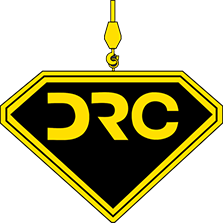Are you looking for the right crane for your upcoming construction project? Depending on your requirements, you may need to decide between a mobile or fixed crane for your worksite. Mobile cranes offer convenience with easy setup and removal while fixed cranes can lift and transport hefty loads. Let’s explore the advantages and disadvantages of both crane types to aid in your decision-making process.
Pros & Cons of Mobile Cranes
The Benefits of Mobile Cranes
There are many different types of mobile cranes available for testing at your construction site. These cranes are most easily identifiable for their ability to be mobile. This means that they could be truck-mounted cranes, side-lift cranes, crawlers, and pick-and-carry cranes. Mobile cranes, as previously mentioned, offer quick setups and are ideal for challenging job sites and rough terrain. They require minimal operating space and are often more cost-effective than fixed cranes.
The Drawbacks of a Mobile Crane
In the past, a significant drawback of mobile cranes compared to fixed cranes was their limited lifting capacity. Many mobile cranes have advanced technologically and boast comparable power to fixed ones. Nonetheless, mobile cranes still have weight limitations and may not always be the most cost-effective option for prolonged use. Generally, for the most heavy loads you will need a fixed cab crane. It’s essential to evaluate your requirements and budget to determine if a mobile crane for your project is the right choice.
Pros & Cons of Fixed Cranes
The Benefits of Fixed Cranes
Similar to mobile cranes, there is a range of fixed cranes available for construction sites. Options include tower cranes, stacker cranes, loader cranes, and more.
The primary advantage of fixed cranes is their unparalleled stability. When set up correctly, they remain securely in place during lifts. Additionally, fixed cranes typically offer greater height reach and can handle heavier loads than certain mobile cranes.
The Drawbacks of a Fixed Crane
Mobile cranes offer quick setups, allowing you to begin using them almost immediately upon arrival at your construction site. However, fixed cranes require more extensive preparation. They must be transported to the worksite in sections and assembled sequentially, which can consume significant time. It’s essential to allocate enough time for both assembly and disassembly of a fixed crane, which can extend the project duration by several days.
Factors to Consider When Choosing a Fixed or Mobile Crane
Undoubtedly, both mobile and fixed cranes offer valuable solutions for construction projects, facilitating the lifting of heavy materials and maintaining project momentum. However, it’s crucial to carefully consider which option suits your needs best before renting. Here are a few of the top factors to consider when choosing between a fixed or mobile crane.
- The terrain at the job site: Consider if the terrain may present a challenge in transporting and setting up a Fixed crane. You may need a mobile crane if the area is too much of a challenge to get to.
- The types of loads you will be carrying: Do you need a variety of materials all around the site? Or is there one primary place that will need things like steel beams? Depending on the weight will depend on the kind of crane you need.
- The budget: Because there are so many different kinds of cranes, there is a wide range in price difference.
Consulting with a representative from a crane company can provide insights into the ideal choice based on your project’s requirements and circumstances.
Learn to Operate a Fixed and Mobile Crane
At Diamond Rigging and Crane, we train and certify some of the best mobile and fixed crane operators in Texas. If you love cranes and are ready to reach greater heights in the construction industry, consider starting a successful career as a crane operator!
Check out our certifications and classes to find the right fit for you!


